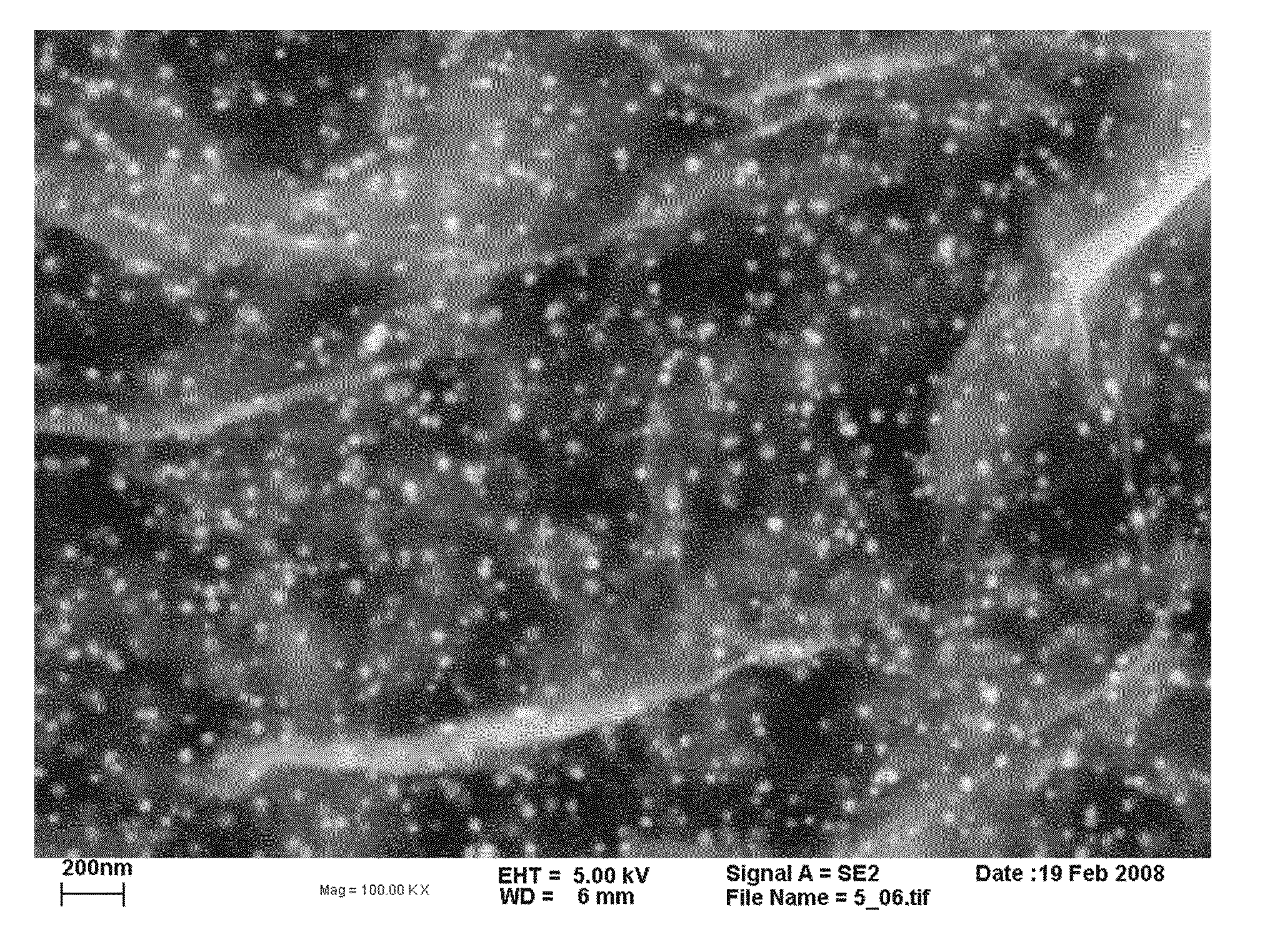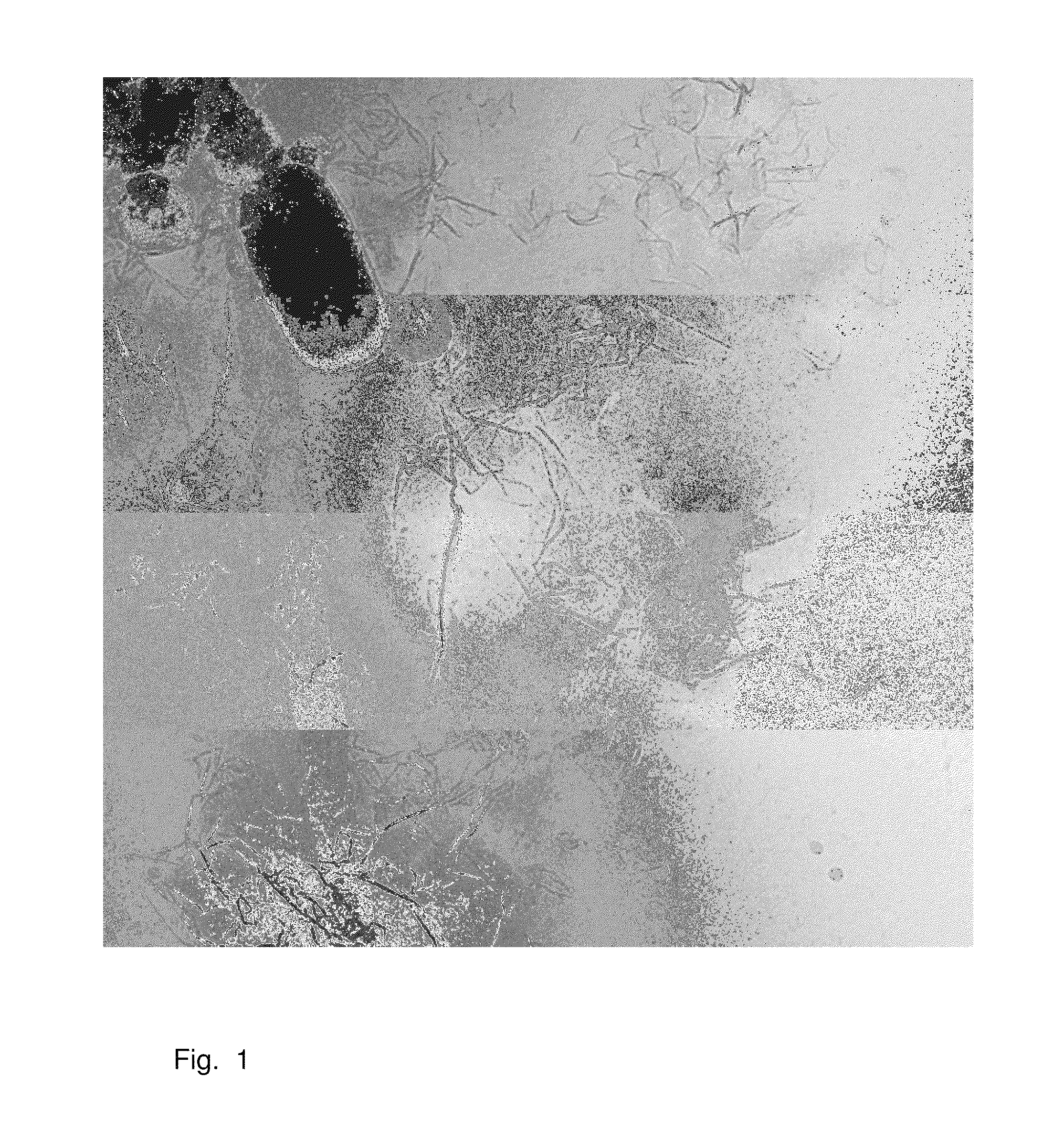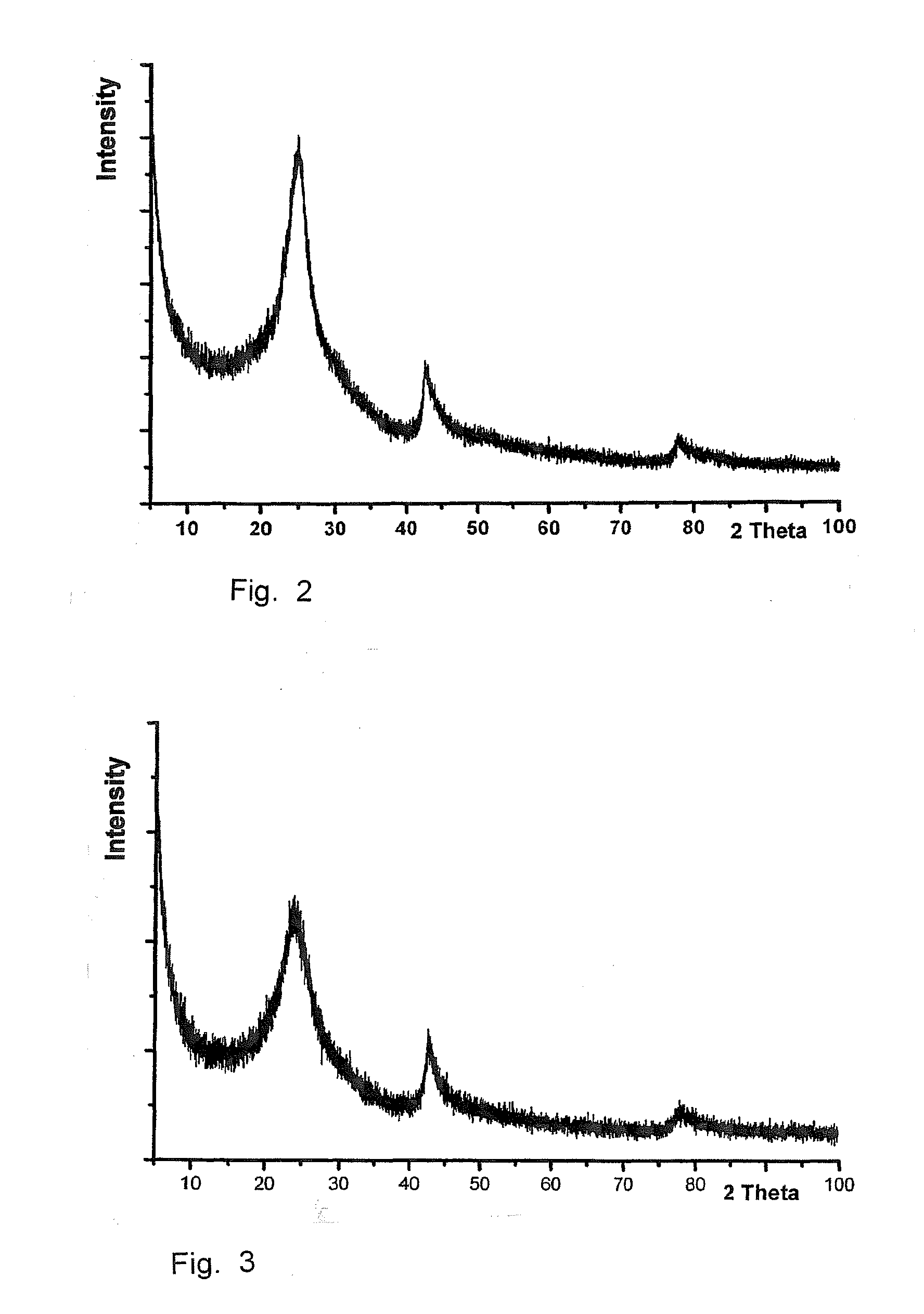Stable dispersions of single and multiple graphene layers in solution
a technology of graphene and solution, applied in the field of stable dispersions of single and multiple graphene layers in solution, can solve problems such as limited us
- Summary
- Abstract
- Description
- Claims
- Application Information
AI Technical Summary
Benefits of technology
Problems solved by technology
Method used
Image
Examples
example 1
[0074]Graphite oxide was prepared according to the well known method by Brodie as modified by Boehm et al. [8].
[0075]10 g graphite were thoroughly mixed with 85 g sodium perchlorate powder. The mixture was cooled to approx. −20° C. using an ice sodium chloride mixture and then slowly stirred with an efficient stirrer. Then 60 ml fuming nitric acid were very slowly added. The viscous green mass was stirred for an additional 30 minutes at room temperature. The mixture was left over night without agitation and then slowly heated to 60° C. for 10 hours. Then 2 liters of water were added to the reaction product, the mixture was filtered and once washed with diluted hydrochloric acid and at least twice, each time with 2 liters of water. After filtration, the obtained mass was freeze dried yielding about 14 g of graphite oxide as a very fluffy ivory colored powder.
[0076]Based on the elemental analysis of the graphite oxide the chemical formula C8O4H1.7 results....
example 2
Preparation of a Colloidal Graphene Oxide Dispersion
[0077]100 mg of the graphite oxide obtained as described in Example 1 were added to 100 ml of deionized water, thoroughly stirred for 12 hours and then left in an ultrasonic bath for 1 hour. The such obtained colloidal dispersion of graphite oxide (further on referred to as graphene oxide), was then reacted to colloidal graphene dispersion (see below).
[0078]The colloidal graphene oxide dispersion obtained by dispersing graphite oxide in water was optically clear to the naked eye and even in the light microscope at 1000 fold magnification, free of particles and had a pH of about 5. Using a laser, the resulting Tyndall effect showed that the graphite oxide resulted in a colloidal dispersion.
[0079]If such dispersion is diluted and then applied to a suitable sample holder, scanning force microscopy reveals that the colloidal dispersion consists of single layers of oxidized graphene, i.e. graphene oxide.
example 3
Preparation of a Coarse Multi-Graphene Oxide Dispersion
[0080]1 g of the graphite oxide obtained as described in Example 1 were added to 100 ml of deionized water acidified with hydrochloric acid to a pH of about 4. After stirring for 1 hour, the obtained coarse dispersion of multi-graphene oxide, was suitable for further reaction to a dispersion of multi-graphene (see below).
PUM
| Property | Measurement | Unit |
|---|---|---|
| temperature | aaaaa | aaaaa |
| temperature | aaaaa | aaaaa |
| temperature | aaaaa | aaaaa |
Abstract
Description
Claims
Application Information
 Login to View More
Login to View More - R&D
- Intellectual Property
- Life Sciences
- Materials
- Tech Scout
- Unparalleled Data Quality
- Higher Quality Content
- 60% Fewer Hallucinations
Browse by: Latest US Patents, China's latest patents, Technical Efficacy Thesaurus, Application Domain, Technology Topic, Popular Technical Reports.
© 2025 PatSnap. All rights reserved.Legal|Privacy policy|Modern Slavery Act Transparency Statement|Sitemap|About US| Contact US: help@patsnap.com



